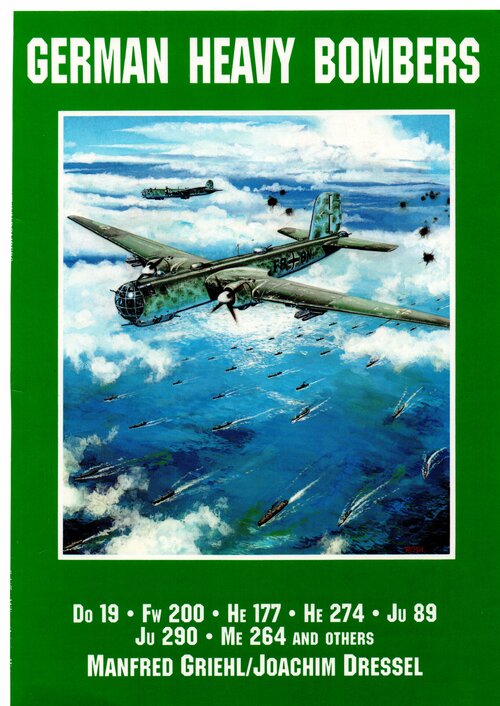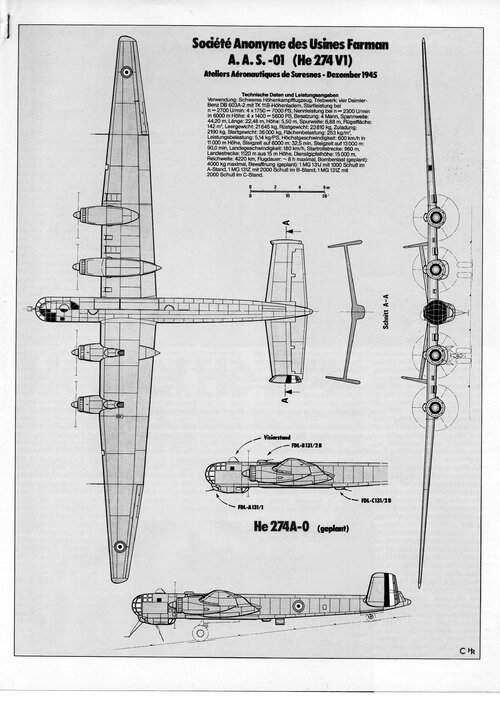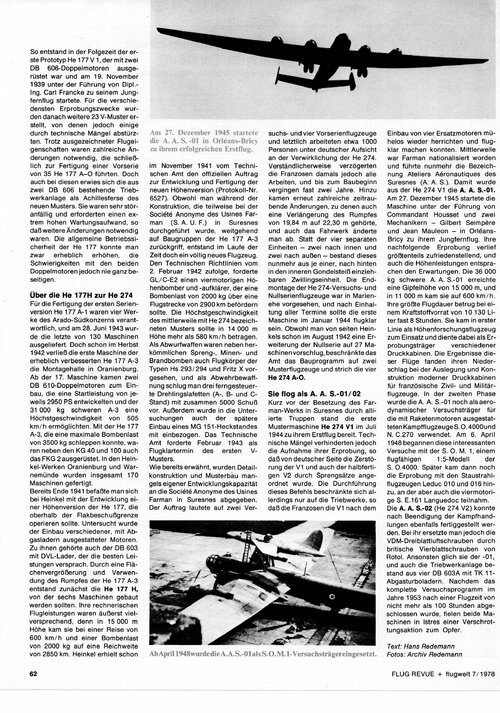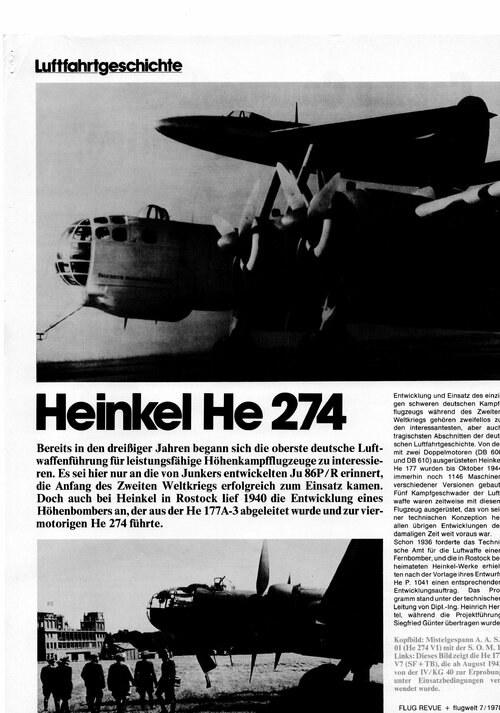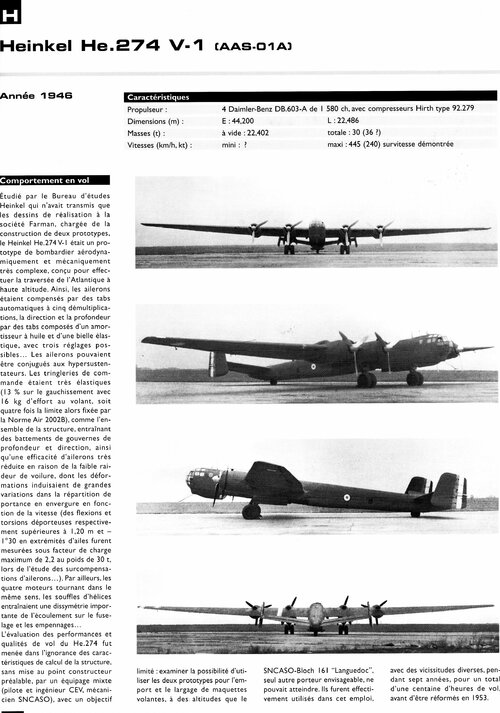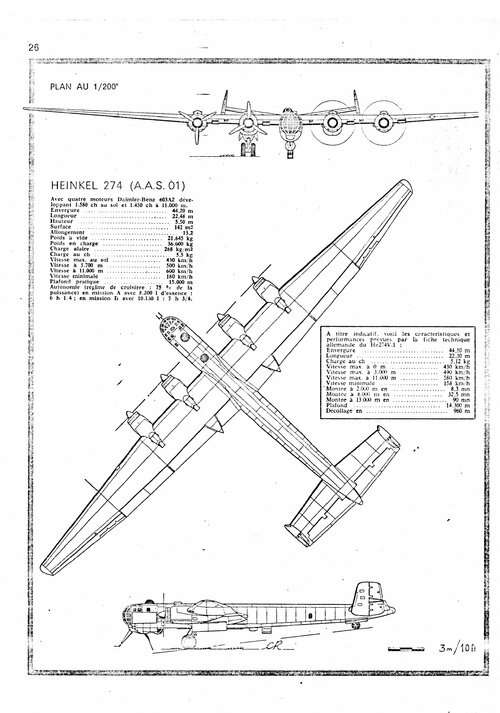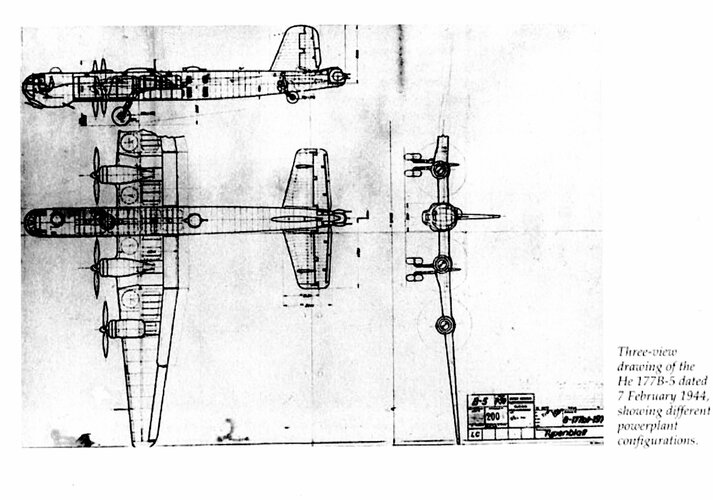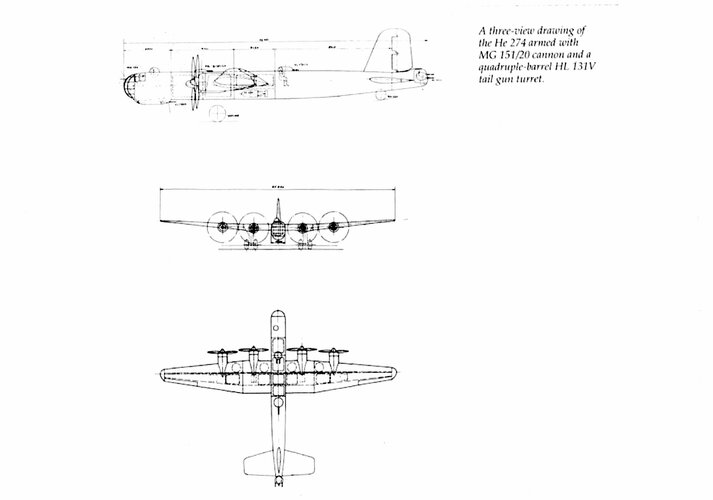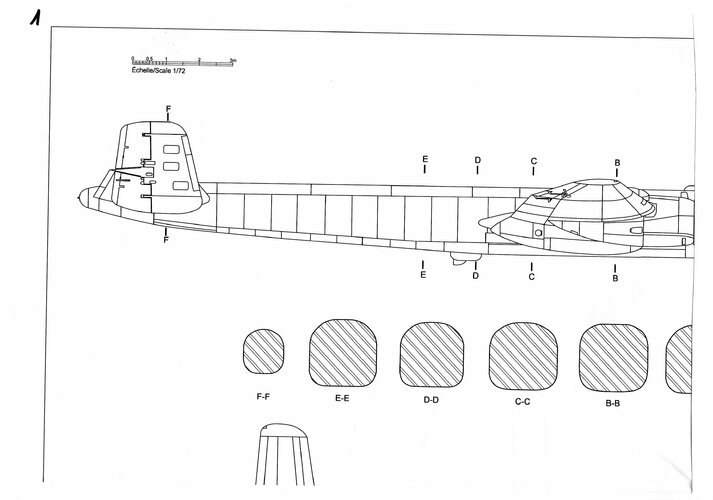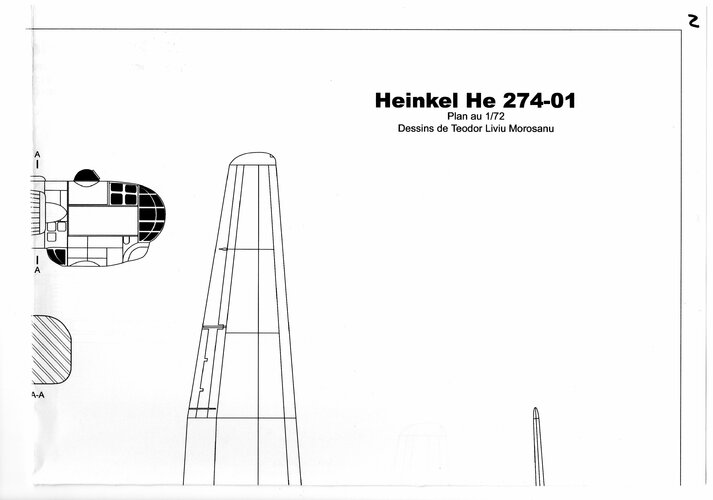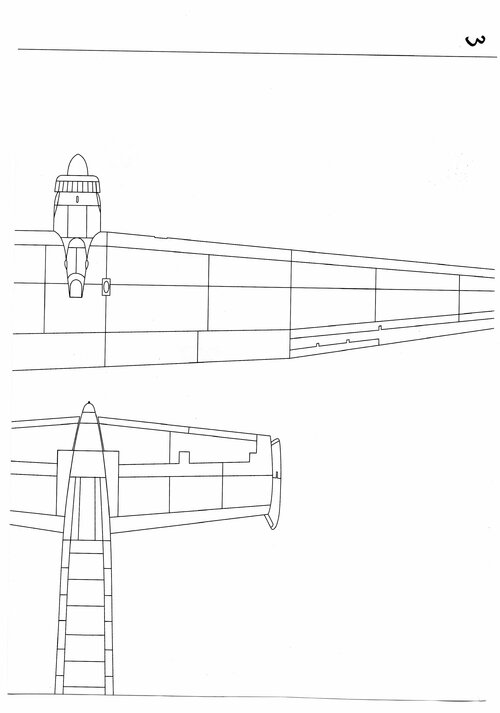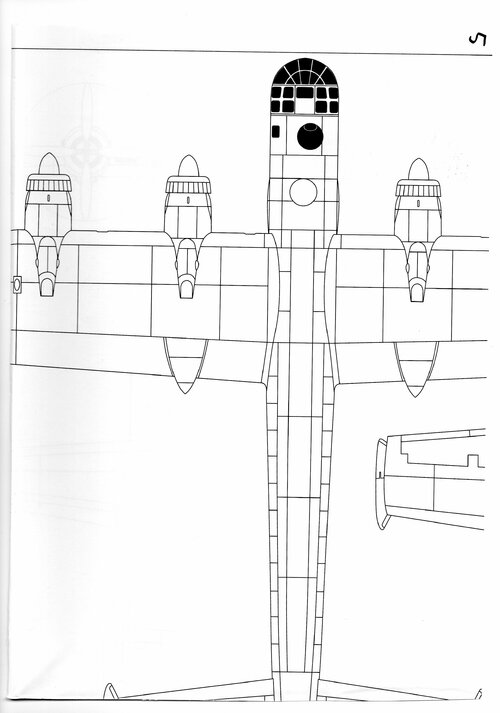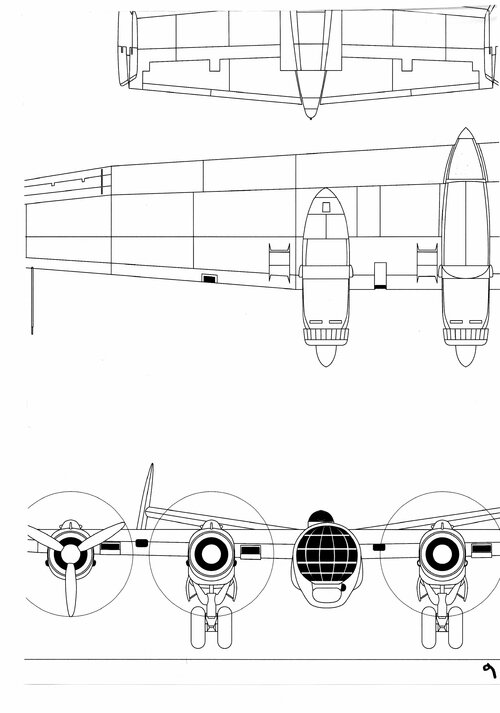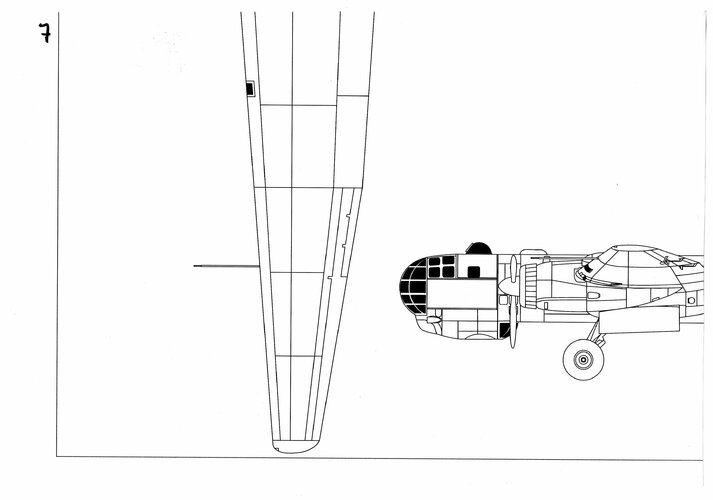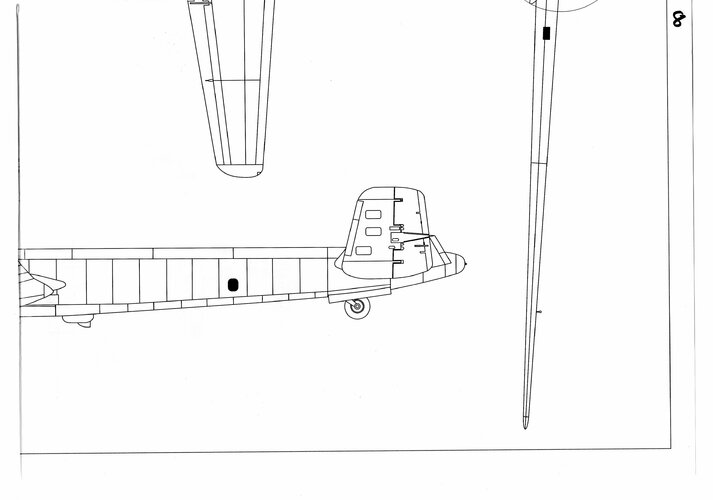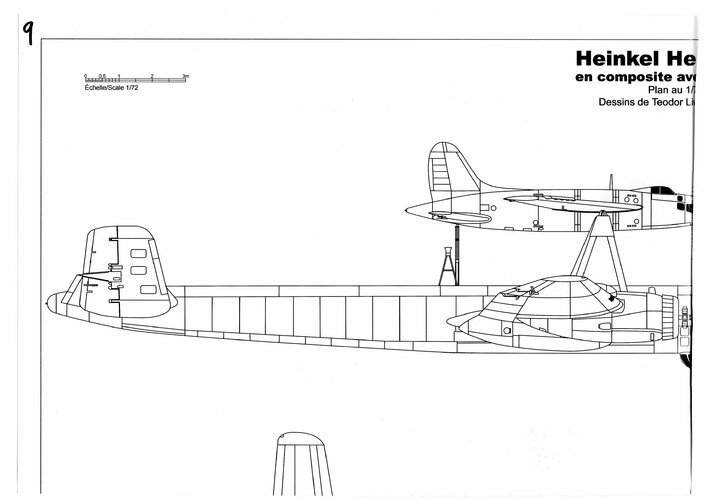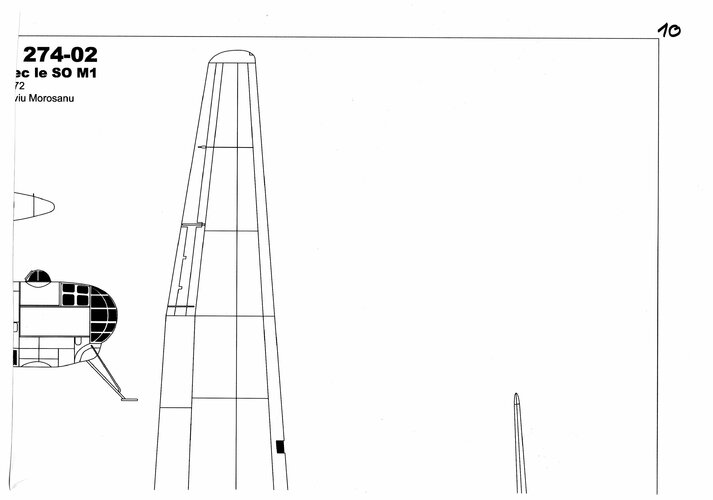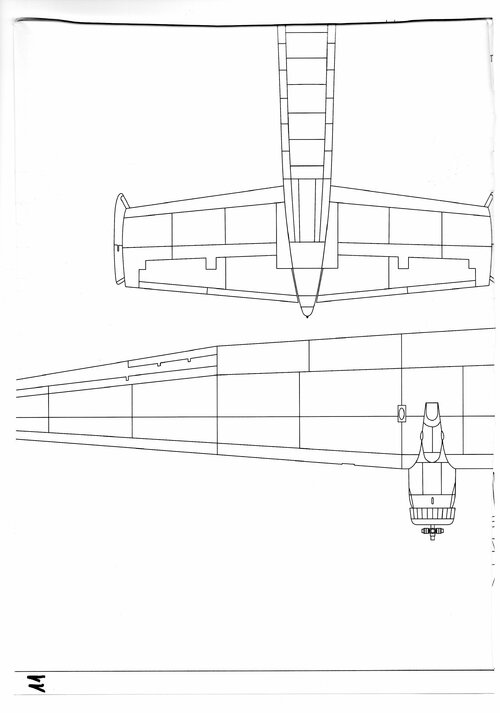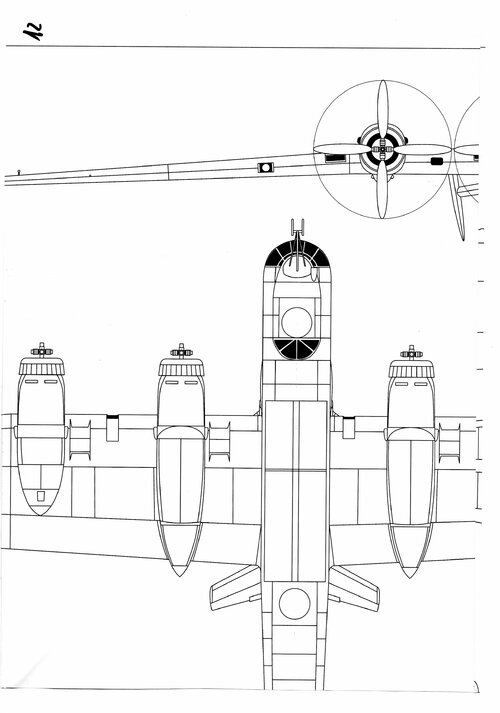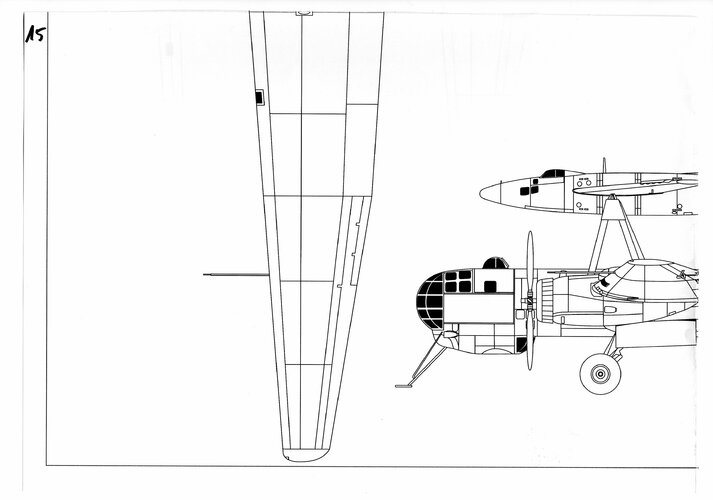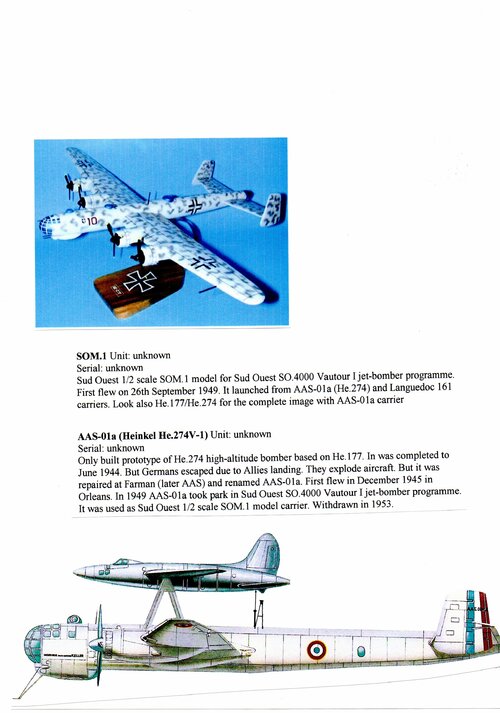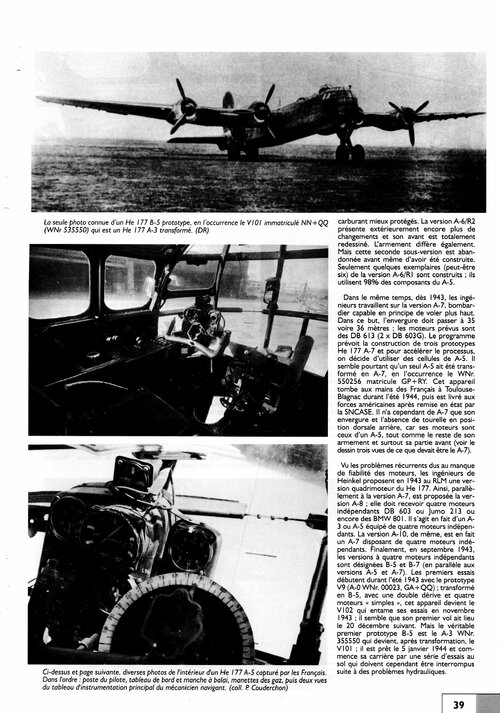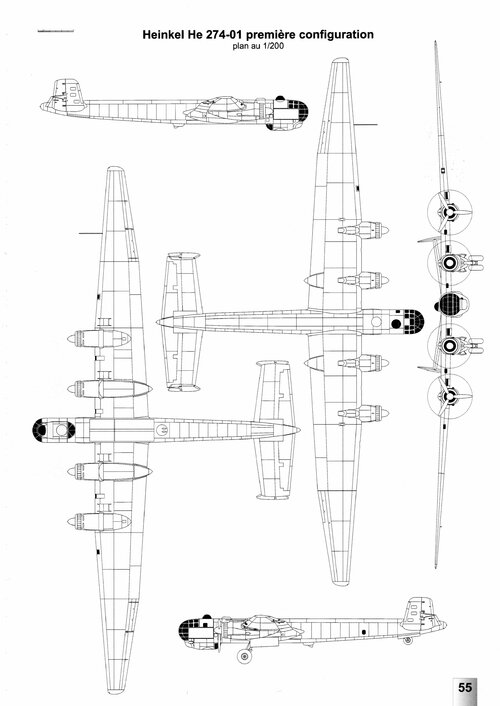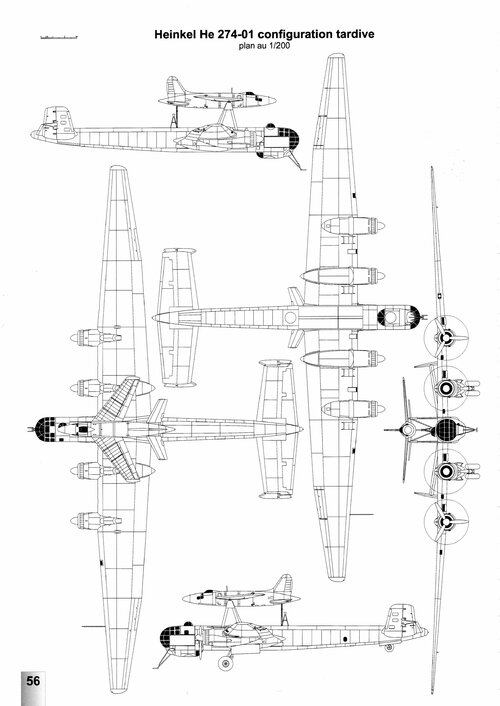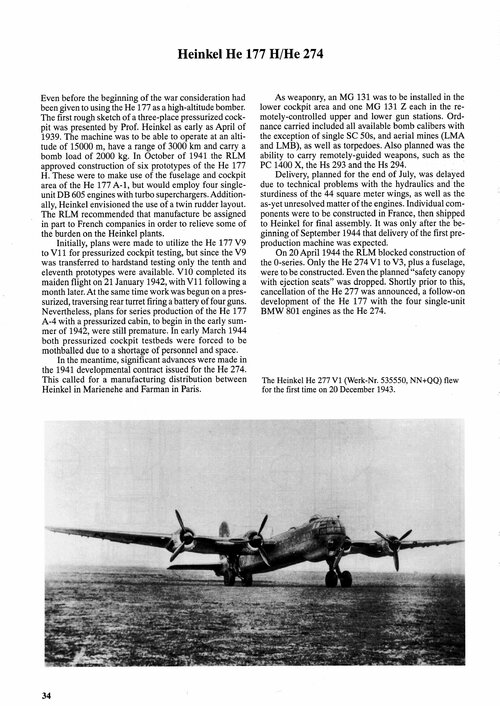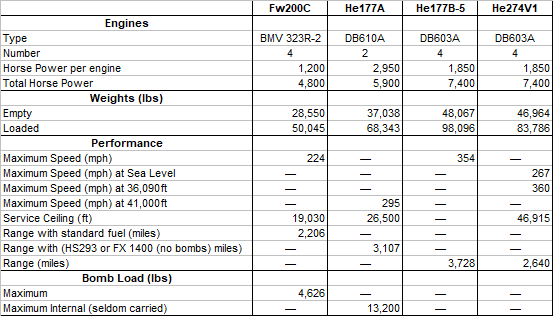You are using an out of date browser. It may not display this or other websites correctly.
You should upgrade or use an alternative browser.
You should upgrade or use an alternative browser.
Alternate history of Heinkel 177
- Thread starter airman
- Start date
Rule of cool
ACCESS: Top Secret
- Joined
- 16 January 2024
- Messages
- 1,834
- Reaction score
- 2,466
The Germans built nearly 1200 troublesome 177s.
If the 4 single engines make the 177 trouble free how many would they make? What sort of bomber force would these numbers build up? What sort of impact would such a bomber force have?
If the 4 single engines make the 177 trouble free how many would they make? What sort of bomber force would these numbers build up? What sort of impact would such a bomber force have?
- Joined
- 13 August 2007
- Messages
- 8,384
- Reaction score
- 10,788
The issue with He 177 was the Luftwaffe wanted it as dive bomber
This let to configuration with two paired engines.
Had they drop that insane idea from begin, The Luftwaffe had good bomber.
it would look more like He 274 with it four engines

This let to configuration with two paired engines.
Had they drop that insane idea from begin, The Luftwaffe had good bomber.
it would look more like He 274 with it four engines
- Joined
- 25 July 2007
- Messages
- 4,294
- Reaction score
- 4,176
The issue with He 177 was the Luftwaffe wanted it as dive bomber
This let to configuration with two paired engines...
He 177 designer Siegfried Günter had already produced an aircraft powered by conjoined Daimler Benz engines - the He 119 (designed with his brother Walter). That DB 606 powerpack had been chosen because it greatly reduced frontal area. It had nothing to do with divebombing.
However, the RLM's universal requirement for bombers - regardless of how large - to be capable of dive bombing did create multiple problems for the He 177. Mainly, it dictated a stronger and thus heavier structure. In an attempt to save weight elsewhere, Günter had omitted firewalls. The close-packed engine pairs readily overheated and, under service conditions, leaked oil and fuel. The rest we know all too well ...
Its not clear to me that the push-pull arrangement of the Piaggio P.50-I would have made any great improvement. The engines are still fairly closely-packed and there is even less space for a sensibly-arranged main undercarriage. But the tandem propellers of the P.50-I also greatly limited the arcs of defensive weapons - much as the props on your push-pull He 177 would have done - especially for the use of the Heinkel's remote barbette.
Casiraghi solved the push-pull issue by providing the Piaggio P.50-II with four separate engines. Designed from scratch, the He 274 would doubtless have had its main undercarriage retracting into the inboard nacelles - making for a shorter, lighter gear while freeing up wing space for fuel.
A Heinkel He 177 equipped with BMW 801 engines would have been useful during the Battle of the Atlantic and in deep raids into Soviet territory to dismantle industries beyond the Ural Mountains, but it would have stood no chance against the British defenses of 1942.
A pressurized version equipped with DB 603 engines could have been built, but it would have been detected by Chain Home radars and intercepted by Spitfires HF Mk. VII or Mosquito HF XV.
A pressurized version equipped with DB 603 engines could have been built, but it would have been detected by Chain Home radars and intercepted by Spitfires HF Mk. VII or Mosquito HF XV.
- Joined
- 8 March 2009
- Messages
- 1,048
- Reaction score
- 1,272
In his biography "Stormy Life", Ernst Heinkel places most of the blame for the He-177s on Heinrich Hertel. It was allegedly him who was responsible for the engine/spar placement, undersized control surfaces, weak spar, ect. with Günter subordinate and Heinkel himself preoccupied.However, the RLM's universal requirement for bombers - regardless of how large - to be capable of dive bombing did create multiple problems for the He 177. Mainly, it dictated a stronger and thus heavier structure. In an attempt to save weight elsewhere, Günter had omitted firewalls. The close-packed engine pairs readily overheated and, under service conditions, leaked oil and fuel. The rest we know all too well ...
Obviously : my post was inspired by Piaggio 50 I four engine bomber configuration. It's configurationThe issue with He 177 was the Luftwaffe wanted it as dive bomber
This let to configuration with two paired engines.
Had they drop that insane idea from begin, The Luftwaffe had good bomber.
it would look more like He 274 with it four engines

I think that a free trouble engines Heinkel 177 could have more impact than real impact . It could relayed the defeat of Germany.The Germans built nearly 1200 troublesome 177s.
If the 4 single engines make the 177 trouble free how many would they make? What sort of bomber force would these numbers build up? What sort of impact would such a bomber force have?
NOMISYRRUC
ACCESS: Top Secret
- Joined
- 28 September 2008
- Messages
- 2,304
- Reaction score
- 3,702
I found a book called "Heinkel HE 177, 277, 274" by Manfred Griehl & Joachim Dressel on Internet Archive looking for something else. It might have information in it that's pertinent to this thread.
HiI found a book called "Heinkel HE 177, 277, 274" by Manfred Griehl & Joachim Dressel on Internet Archive looking for something else. It might have information in it that's pertinent to this thread.
Attachments
Some additional info here
Attachments
Post-2
Attachments
NOMISYRRUC
ACCESS: Top Secret
- Joined
- 28 September 2008
- Messages
- 2,304
- Reaction score
- 3,702
I am nonplussed.
Some additional info here
Post-2
Most of the text in the above is French and German. FWIW the book I found is an English translation of a book written in German.Post-3
Last edited:
The texts I have included belong to other publications that I keep in my archivesI am nonplussed.
Most of the text in the above is French and German. FWIW the book I found is an English translation of a boog written in German.
NOMISYRRUC
ACCESS: Top Secret
- Joined
- 28 September 2008
- Messages
- 2,304
- Reaction score
- 3,702
I am still nonplussed.The texts I have included belong to other publications that I keep in my archives
NOMISYRRUC
ACCESS: Top Secret
- Joined
- 28 September 2008
- Messages
- 2,304
- Reaction score
- 3,702
The He177 was begun at about the same time as the British heavy bombers built to Specifications B.12/36 and P.13/36.
19.11.39 first flight of the Heinkel He177 – according to the Putnams on German Aircraft of the Second World War . . .
If its development had proceeded as smoothly as its British rivals service entry (probably with KG40) would have been in April 1941 (15 months after its first flight) and its first operation would have been in August 1941 (19 months after its first flight).
However, the interval between first flight and service entry might have been reduced because 8 He177 prototypes were built instead of 2 each of the British heavy bomber prototypes so the development flying might have been completed sooner. And the first flight might have been several months earlier ITTL due to the change of engines.
14.05.39 first flight of the Short Stirling.
It entered service (with No 7 Squadron, RAF) in August 1940 – 15 months later.
Its first operation was a raid on Rotterdam on the night of 10th-11th February 1941 – 21 months after its first flight.
27.07.39 first flight of the Avro Manchester.
It entered service (with No 207 Squadron, RAF) in November 1940 – 16 months later.
Its first operation was a raid on Brest on the night of 24th-25th February 1941 – 19 months after its first flight.
25.10.39 first flight of the Handley Page Halifax.
It entered service (with No 35 Squadron, RAF) in December 1940 – 14 months later.
Its first operation was a raid on Le Havre on the night of 11th-12th March 1941 – 17 months after its first flight.
That’s an average of 15 months from first flight to service entry and 19 months from first flight to first operation. 2 prototypes of each aircraft were built.
19.11.39 first flight of the Heinkel He177 – according to the Putnams on German Aircraft of the Second World War . . .
8 He177 prototypes (V1 to V8) were purpose built and the other 16 (V9 - V24) were conversions of pre-production & production aircraft.
Some He177A-1s were delivered to I./KG40 in July 1942 for operational trials and on 28.08.42 . . . “one of them dropped a single 250kg (550lb) bomb on the Broad Water district of Bristol, killing 45 people and injuring a further 66—the worst single bomb incident suffered by the city during the war.”
If its development had proceeded as smoothly as its British rivals service entry (probably with KG40) would have been in April 1941 (15 months after its first flight) and its first operation would have been in August 1941 (19 months after its first flight).
However, the interval between first flight and service entry might have been reduced because 8 He177 prototypes were built instead of 2 each of the British heavy bomber prototypes so the development flying might have been completed sooner. And the first flight might have been several months earlier ITTL due to the change of engines.
NOMISYRRUC
ACCESS: Top Secret
- Joined
- 28 September 2008
- Messages
- 2,304
- Reaction score
- 3,702
How reliable are their figures for the DB 603A-powered 177s/274s?Unfortunately the performance statistics aren't easily comparable because the maximum speeds are at different heights and the maximum ranges are with different loads.
NOMISYRRUC
ACCESS: Top Secret
- Joined
- 28 September 2008
- Messages
- 2,304
- Reaction score
- 3,702
Haven't the foggiest! They're similar to the figures in the Putnams on German Aircraft of the Second World War.How reliable are their figures for the DB 603A-powered 177s/274s?
He177B (which it and the Wood & Gunston book call the He277)
48,069lb empty weight
98,105lb maximum loaded weight
354mph maximum speed at 18,701ft
302mph maximum speed at Sea Level
286mph cruising speed at 17,717ft
49,215ft absolute ceiling
3,728 miles maximum range
He274
46,966lb empty weight
79,380lb loaded weight - it says "loaded weight" not "maximum loaded weight" like the He177B
360mph maximum speed at 36,091ft
267mph maximum speed at Sea Level
248mph cruising speed at Sea Level
46,918ft absolute ceiling
1,770 miles normal range
I haven't the foggiest whether they're reliable either.NOMISYRRUC
ACCESS: Top Secret
- Joined
- 28 September 2008
- Messages
- 2,304
- Reaction score
- 3,702
OTL Production of the Do217, Fw200, He177 and Ju290
From September 1939 To May 1945
Source: Table 8-Q German Aircraft Production 1939-45 on Pages 146 & 147 of Vajda & Dancey
As far as I know this excludes prototypes.

For what it's worth British factories produced 12,637 heavy bombers (Halifax, Lancaster, Manchester, Stirling & Warwick) 1940-44.
1940 - 41
1941 - 498
1942 - 1,976,
1943 - 4,615
1944 - 5,507
From September 1939 To May 1945
Source: Table 8-Q German Aircraft Production 1939-45 on Pages 146 & 147 of Vajda & Dancey
As far as I know this excludes prototypes.

For what it's worth British factories produced 12,637 heavy bombers (Halifax, Lancaster, Manchester, Stirling & Warwick) 1940-44.
1940 - 41
1941 - 498
1942 - 1,976,
1943 - 4,615
1944 - 5,507
Last edited:
NOMISYRRUC
ACCESS: Top Secret
- Joined
- 28 September 2008
- Messages
- 2,304
- Reaction score
- 3,702
My initial reply was.How reliable are their figures for the DB 603A-powered 177s/274s?
Page 192 of the book those performance figures came from ("Hitler's Luftwaffe" by Tony Wood and Bill Gunston) also said the He 274 was . . .Haven't the foggiest!
Probably the most formidable bomber built in Europe in World War II, the He 274 could have been started at the same time as the He 177—and it is fortunate for Britain that it was not.
NOMISYRRUC
ACCESS: Top Secret
- Joined
- 28 September 2008
- Messages
- 2,304
- Reaction score
- 3,702
For what it's worth there alternatehistory.com had a He177 thread two years ago.
Heinkel He 177 Germany's succesful longrange bomber
Although I do not believe that one weapon system could make a difference, never the less; what effect would be on a more successful Heinkel HE 177 bomber. https://en.wikipedia.org/wiki/Heinkel_He_177_Greif Let assume, due to some one , very high in the top of Nazi Germany, it is realised that...
www.alternatehistory.com
NOMISYRRUC
ACCESS: Top Secret
- Joined
- 28 September 2008
- Messages
- 2,304
- Reaction score
- 3,702
This is what Vjda and Dancey had to say on Page 235 of "German Aircraft Production 1933-1945".
If they were right the DB603 engine would have been ready in time to power the He 177.The DB601 injection engine was a success and from 1938 assured the superiority of many German warplanes, such as the Bf 109, Bf 110C, Do 215, and the He 111P, but it was a very different story with its more powerful successor, the DB603. Daimler offered this new 1,500hp engine to the RLM for the first time on 4th September 1936. Udet halted its development on 11th March 1937! However, Daimler-Benz did continue very slowly with its development as a private venture. The first engine was not tested until 1939 and 120 were ordered by the RLM on 3rd February 1940. If the RLM had not forced the interruption of the DB603's development in 1937 this powerful 1,750hp engine would have already in 1940 been available to equip the German warplanes, with the possibility of of a completely different outcome of the Battle of Britain.
My initial reply was.
Page 192 of the book those performance figures came from ("Hitler's Luftwaffe" by Tony Wood and Bill Gunston) also said the He 274 was . .Probably the most formidable bomber built in Europe in World War II, the He 274 could have been started at the same time as the He 177—and it is fortunate for Britain that it was not. .
Two fine gentlemen skip over the few facts:
- DB 603A was every bit as temperamental as the 601/610 engines, if not worse in 1943 since no refinements in installation could solve the bad oil system and bad exhaust valves
- German production of turbochargers was non-existent beyond token numbers
- Assumption that unescorted He 274s will have it their way above UK from 1943 on is iffy, to say at least
- Big fleets of the 274s would've been made on account of something else, even when we allow for the save of the 177 not being manufactured
- Fuel required for day after day operations by the 274s was beyond German abilities to supply that fuel.
If they were right the DB603 engine would have been ready in time to power the He 177.
The 274 would've been okay even with the BMW 801s for the starters. Something got to give, though, like the Do 217s?
[Vajda and Dancey say:] If the RLM had not forced the interruption of the DB603's development in 1937 this powerful 1,750hp engine would have already in 1940 been available to equip the German warplanes, with the possibility of of a completely different outcome of the Battle of Britain.
Unfortunately, these two other fine gentlemen seem to not specify on exactly what aircraft the DB 603 would've been installed in 1940 for the BoB.
NOMISYRRUC
ACCESS: Top Secret
- Joined
- 28 September 2008
- Messages
- 2,304
- Reaction score
- 3,702
Two fine gentlemen skip over the few facts:
- DB 603A was every bit as temperamental as the 601/610 engines, if not worse in 1943 since no refinements in installation could solve the bad oil system and bad exhaust valves
- German production of turbochargers was non-existent beyond token numbers
- Assumption that unescorted He 274s will have it their way above UK from 1943 on is iffy, to say at least
- Big fleets of the 274s would've been made on account of something else, even when we allow for the save of the 177 not being manufactured
- Fuel required for day after day operations by the 274s was beyond German abilities to supply that fuel.
The 274 would've been okay even with the BMW 801s for the starters. Something got to give, though, like the Do 217s?
In that case Posts 21 and 23 were a waste of time.Unfortunately, these two other fine gentlemen seem to not specify on exactly what aircraft the DB 603 would've been installed in 1940 for the BoB.
Please, don't get upset. I always value your contributions.In that case Posts 21 and 23 were a waste of time.
My comments were about what the conclusions that writers were making.
Similar threads
-
-
WW2 Luftwaffe - what if strategic vision had prevailed?
- Started by pathology_doc
- Replies: 40
-
Heinkel 177 A7 R2 - an alternate version
- Started by airman
- Replies: 7
-
Heinkel 277 with 6 engined - speculative appearance
- Started by airman
- Replies: 0
-


